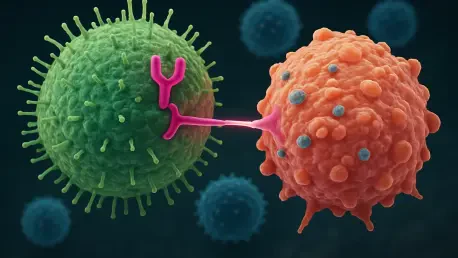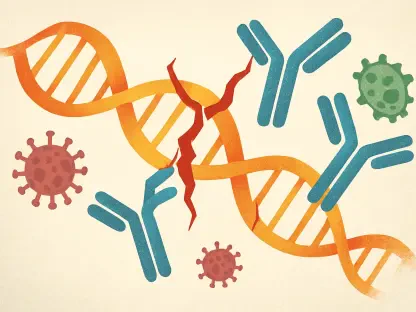In the rapidly advancing field of cancer treatment, chimeric antigen receptor natural killer (CAR-NK) cell therapies stand out as a groundbreaking approach, offering scalable, off-the-shelf solutions that could transform patient care. These therapies, often developed from induced pluripotent stem cells (iPSCs), combine the inherent cytotoxicity of NK cells with engineered precision to target tumors, while presenting a lower risk of complications like graft-versus-host disease compared to CAR T cell therapies. However, the journey from laboratory innovation to clinical application is laden with stringent regulatory requirements set by the U.S. Food and Drug Administration (FDA). For developers and regulatory professionals, understanding and complying with these rules is not just a necessity but a critical step toward ensuring patient safety and therapeutic success. This article delves into the intricate regulatory landscape, breaking down key FDA guidelines and offering actionable insights to streamline the path through Investigational New Drug (IND) applications and beyond, ultimately aiming to bring these promising treatments to market efficiently.
Deciphering the Regulatory Framework
The regulatory environment surrounding CAR-NK cell therapies is as dynamic as the science behind them, shaped by the FDA’s ongoing efforts to address the unique challenges of advanced cellular therapies. With a growing number of guidance documents issued over recent years, the agency provides a roadmap for developers to navigate the complexities of clinical development. These guidelines cover everything from manufacturing standards to safety protocols, reflecting the rapid pace of innovation in the field. For those working on allogeneic CAR-NK products, staying abreast of this evolving framework is paramount. It’s not enough to simply know the rules; developers must interpret how each piece applies to their specific processes, ensuring that every step aligns with FDA expectations to avoid costly delays or setbacks during clinical trials and eventual Biologics License Applications (BLA).
Beyond the volume of regulations, the real challenge lies in their application to allogeneic therapies, which differ significantly from autologous approaches due to their sourcing and production intricacies. The use of iPSCs and multi-tiered cell banking systems introduces variables that demand meticulous oversight, as does the integration of genome editing technologies. The FDA’s focus on consistency and safety means that developers must anticipate how each guideline intersects with their product’s unique attributes. This requires a deep dive into the agency’s expectations, often blending multiple documents into a cohesive strategy that balances innovation with compliance. By prioritizing early engagement with these frameworks, companies can better position themselves to address regulatory scrutiny head-on.
Critical FDA Guidance Documents to Master
Navigating the FDA’s regulatory maze begins with a thorough understanding of the key guidance documents that shape expectations for CAR-NK therapies. Among the most pivotal is the 2024 guidance on CAR T cell products, which, while initially focused on T cells, extends critical principles to allogeneic NK therapies, detailing manufacturing controls, comparability assessments, and IND submission requirements. Equally important is the 2020 guidance on Chemistry, Manufacturing, and Control (CMC) information for human gene therapy INDs, which establishes foundational standards for ensuring product quality and consistency. These documents are not mere checklists but essential tools that developers must integrate into their workflows to meet the agency’s rigorous standards for clinical advancement.
Another set of crucial guidelines includes the 2023 draft on potency assurance for cellular and gene therapy products, which underscores the importance of demonstrating therapeutic effectiveness through multifaceted testing approaches. Additionally, the 2024 guidance on human gene therapy products incorporating genome editing tackles specific safety concerns such as off-target effects and genomic integrity. Looking ahead, drafts slated for release around 2025 and beyond address emerging topics like donor eligibility criteria and alternative microbial testing methods, signaling the FDA’s forward-thinking approach. Keeping pace with both current and upcoming guidelines ensures that developers are not blindsided by shifting expectations, allowing for proactive adjustments in their development timelines and strategies.
Tackling the Distinct Hurdles of Allogeneic Therapies
Allogeneic CAR-NK therapies, while promising in their scalability, present a unique set of challenges that set them apart from autologous counterparts and demand specialized regulatory attention. Often derived from iPSCs, these therapies involve complex genetic modifications and proprietary bioprocesses that can introduce variability at multiple stages of production. Risks such as tumorigenicity from residual undifferentiated cells or inconsistencies in donor-derived materials pose significant hurdles that the FDA scrutinizes closely. Developers must prioritize comprehensive risk assessments to identify potential pitfalls early, ensuring that their manufacturing processes are robust enough to withstand regulatory evaluation while maintaining the therapy’s intended therapeutic profile.
To address these distinct issues, the FDA emphasizes rigorous characterization of starting materials and genetic stability throughout the production lifecycle. This means implementing stringent in-process controls and quality assurance measures to mitigate risks like batch-to-batch variability or unintended genetic alterations. Developers are also tasked with validating the safety of their cell banking systems, ensuring that each tier meets the agency’s expectations for traceability and purity. By focusing on these critical areas, companies can build a strong foundation for their IND submissions, demonstrating to regulators that they have accounted for the inherent complexities of allogeneic CAR-NK products and are committed to delivering a safe and effective therapy.
Crafting Effective Control and Potency Approaches
A cornerstone of FDA regulatory expectations for CAR-NK therapies is the development of comprehensive control strategies that ensure product quality and consistency across all stages of production. Potency, as a critical quality attribute (CQA), takes center stage in these efforts, with the agency advocating for a matrixed approach that incorporates multiple analytical methods such as cytotoxicity assays, target engagement metrics, and transgene expression analysis. These diverse readouts collectively confirm that the therapy performs as intended, providing a robust measure of its therapeutic potential. Developers must design these strategies early in the process, aligning them with clinical phase requirements to avoid gaps that could jeopardize regulatory approval.
Equally vital is the establishment of well-defined lot release criteria and in-process monitoring protocols that tie directly to the identified CQAs. The FDA expects developers to employ orthogonal testing methods to validate product attributes, ensuring that each batch meets predefined standards before advancing to clinical use. This meticulous approach not only satisfies regulatory demands but also instills confidence in the therapy’s reliability during trials. Furthermore, integrating these controls into a modular framework allows for adaptability as new guidance emerges or as the product moves into later development phases. Such foresight in crafting control and potency strategies is essential for navigating the FDA’s stringent oversight and achieving successful outcomes.
Looking Ahead to Regulatory Success
Reflecting on the journey through the FDA’s regulatory landscape for CAR-NK cell therapies, it becomes evident that meticulous preparation and alignment with guidance documents are indispensable for progress. Developers who invest time in understanding the intricacies of manufacturing controls, potency assurance, and genome editing safety navigate the IND process with greater ease. Those who anticipate updates in donor eligibility and microbial testing standards stay ahead of potential roadblocks, ensuring their strategies remain compliant with evolving expectations. The emphasis on early product characterization and integrated approaches proves to be a game-changer in meeting the agency’s rigorous demands.
Moving forward, the focus should shift toward proactive engagement with the FDA through pre-IND meetings and continuous dialogue to clarify expectations and address concerns early. Developers are encouraged to leverage platform technologies and harmonized frameworks to streamline compliance efforts, particularly as new guidance emerges in the coming years. Building partnerships with regulatory experts can also provide valuable insights, helping to refine control strategies and mitigate risks. By adopting these actionable steps, the path to bringing CAR-NK therapies to patients can be smoothed, turning regulatory challenges into opportunities for innovation and impact in cancer treatment.









